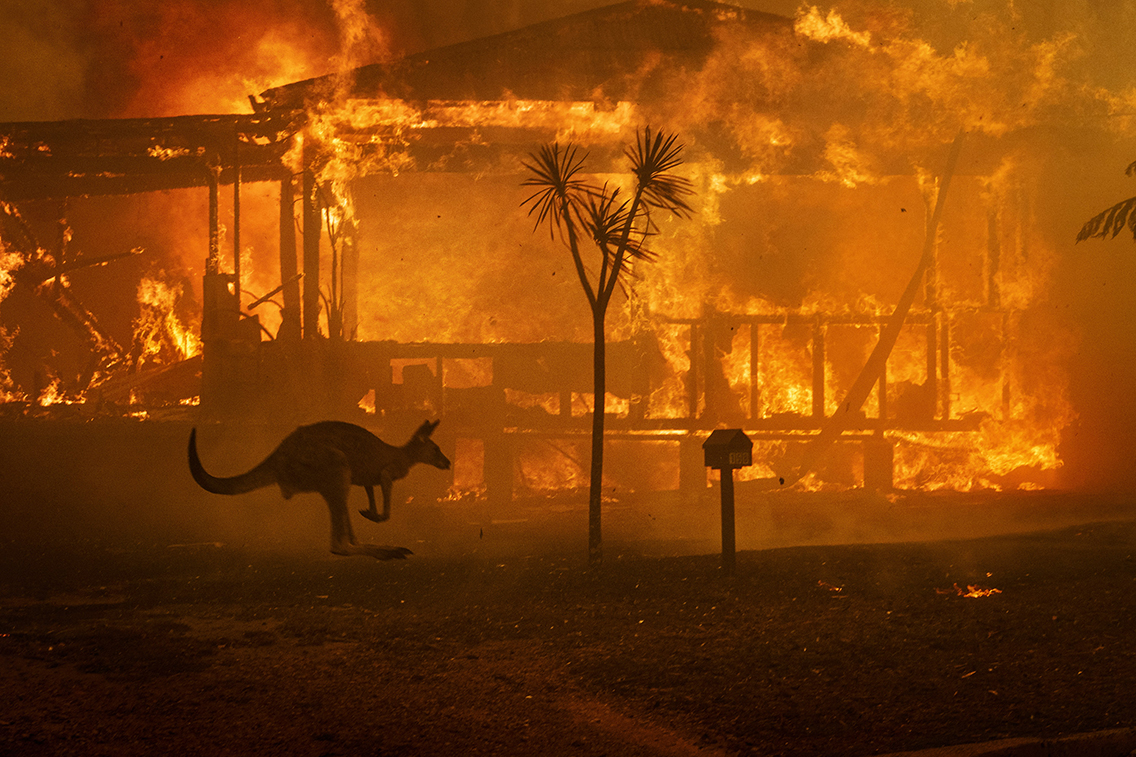Presentation
AUSTRALIA • BORN IN 1984
FIRES AND COUNTER-FIRES
Between June 2019 and May 2020, the bushfire season in Australia was so violent that specialists dubbed it “Black Summer”. With 24.3 million hectares ravaged, more than 3,000 buildings destroyed, 88 billion Australian dollars in financial losses, 34 people killed and 3 billion terrestrial vertebrates killed, it was one of the greatest disasters in the country’s recent history.
Photographer Matthew Abbott captured the tragic event and won a World Press Photo award for his image of a kangaroo hopping past a burning house.
At the time, many members of the government tried to deny or ignore the link between climate change and the increase in the number and scale of fires. However, in an article published in the scientific journal Nature in 2021, a group of researchers demonstrate that fire activity in Australia is strongly influenced by high climate variability, and that climate change has the potential to further alter the dynamics of these fires.
Confronted with this reality, could the answer lie in the ancestral practices practised by the Aborigines since time immemorial? This indigenous people, whose culture is one of the oldest on the planet, has revived the ancient practice of burning to preserve and improve their native lands – and contribute to the development of their communities. These practices have been analysed and refined by scientists who now endorse them. At the start of the dry season, these men and women do not therefore fight fires. They start them, to maintain better control of the flames afterwards. As the number of forest fires continues to rise, fire is being reconsidered as a solution, and not just a problem.
JARDIN DES MARAIS

© Matthew Abbott • Exhibition Fires and counter-fires

